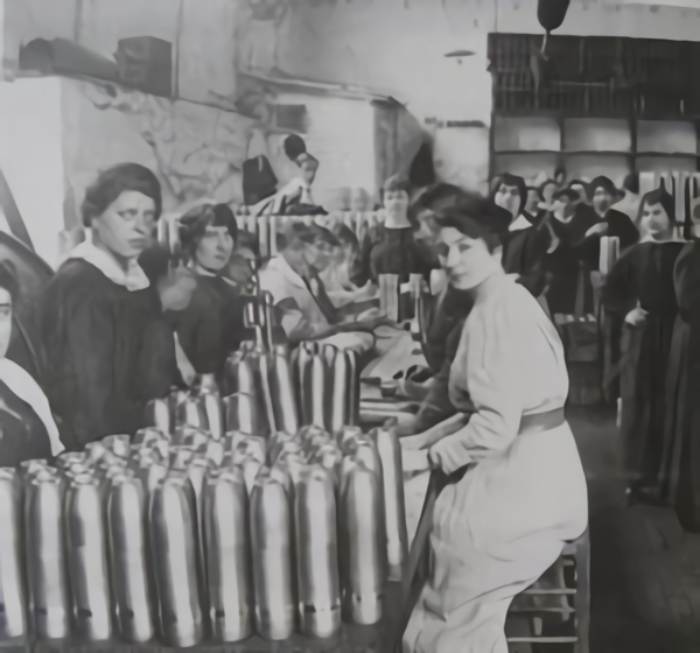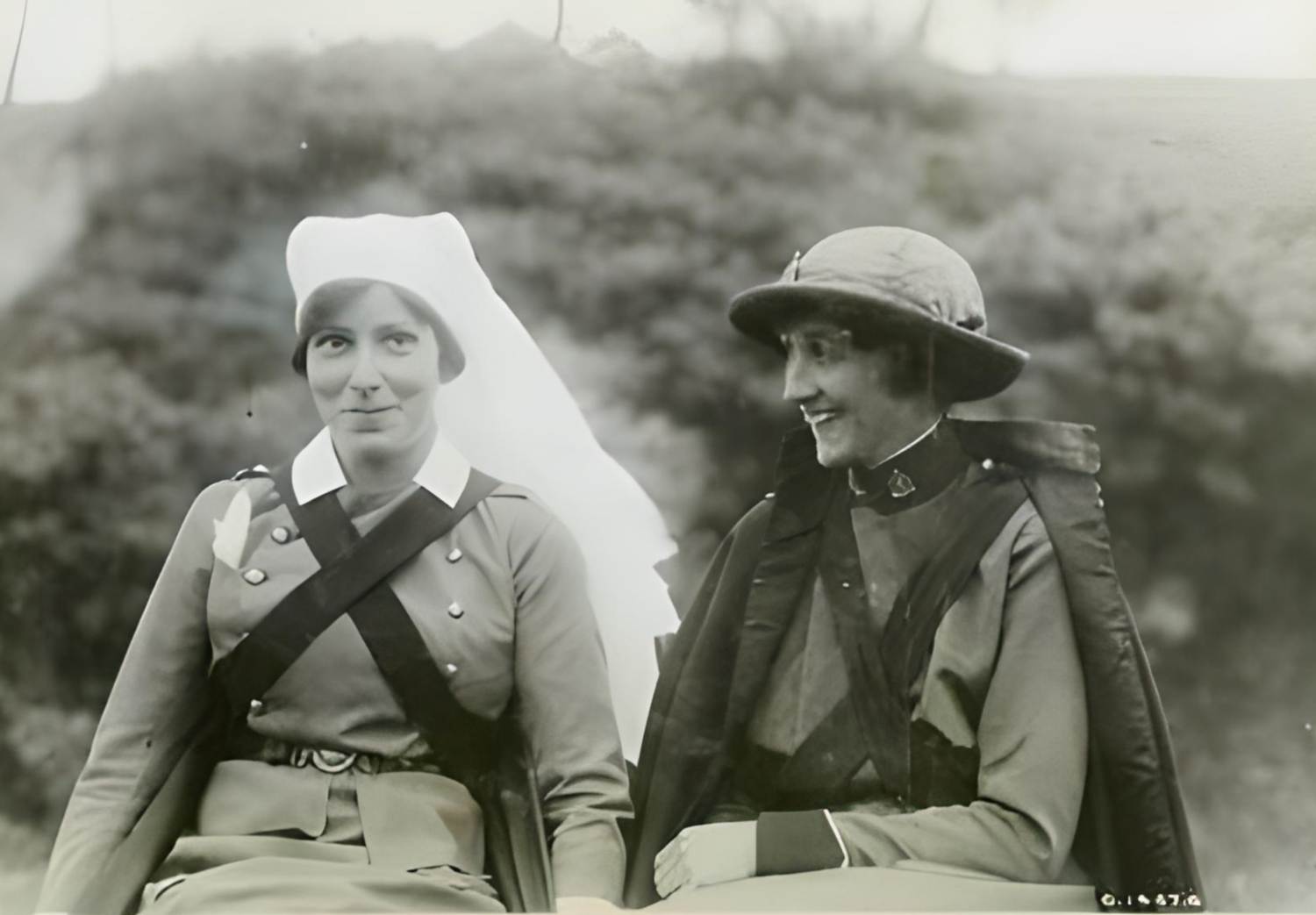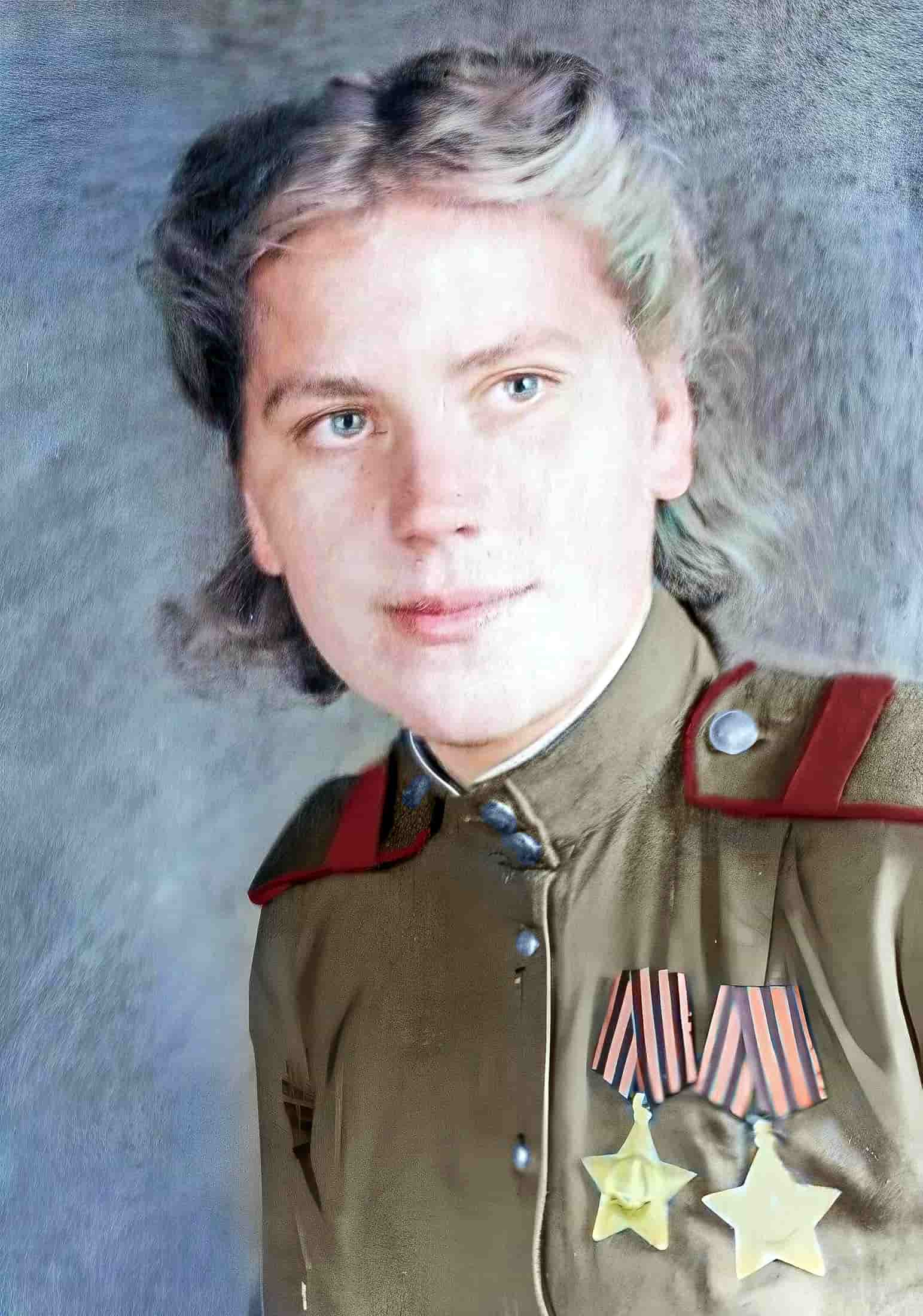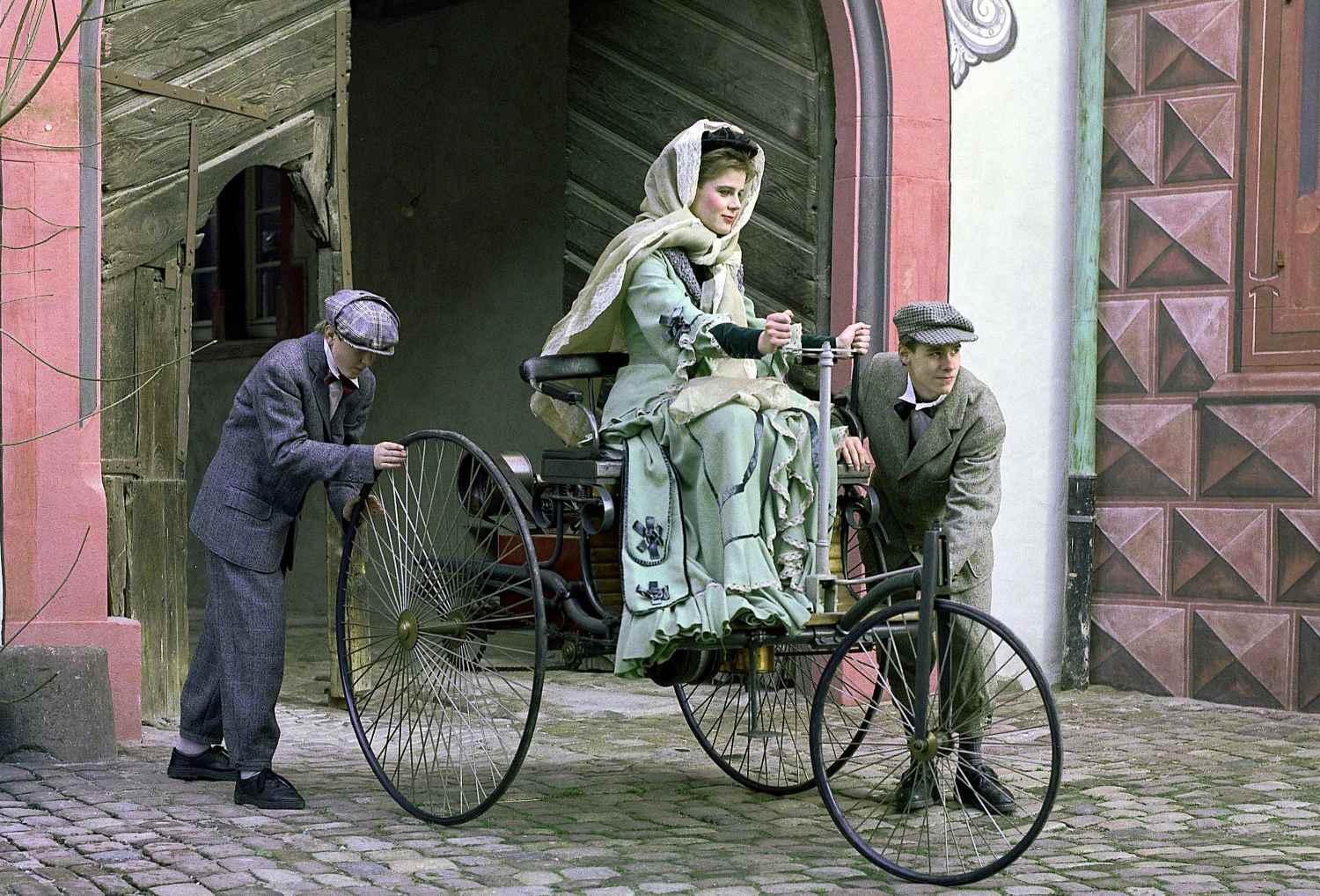In favor of the struggles of the men, chronicled in many books and bibliographies, history chose to ignore the individual merits and hardships of women during the 1914–1918 conflict. But the role of women throughout World War II from 1939 to 1945 continues to provide new avenues of inquiry. At the front, they were resistance fighters, spies, journalists, munitionists, nurses, and heroes of everyday survival.
Women in World War I (1914–1918)
There were two main responses from women when war broke out in the First World War: either they wanted to serve in their own manner as near to the front as possible, or they wanted to make up for the shortage of males. The rural population that makes up the bulk of Europe’s population pushes women to take on the responsibility of managing the family’s wealth.
Whether in the city or the rural, for every male recruited, a woman takes on the role of a spouse or father. Since female factory workers were paid just half as much as the males they replaced, they were seen as a source of inexpensive labor. These ladies worked up to eleven hours a day without proper safety precautions in place, leaving them vulnerable to illness, overwork, starvation, and exhaustion. Each shell weighed 15 pounds (7 kilograms), and the factory worker had to carry each machine twice a day for a total of 25,000 shells and 77,000 pounds (35,000 kilograms), which rapidly took a toll on her health.
The status of women
Some people think that women who enter the traditionally male-dominated workforce threaten the status quo and pervert traditional notions of femininity. As a result, women were expected to play supporting roles in the war effort, such as nurses and secretaries, rather than managers and workers.
This ensures that men will always be seen as superior. Women were limited to two stereotypes: the nurse, who was referred to as “the white angel” because she exemplified dedication, self-sacrifice, and appreciation for the soldiers’ sacrifice. The second symbol is the worker, a maid shaped by the masculine gaze since the language of war trivializes and feminizes every task related to the conflict.
Researchers and publishers did not start taking an interest in the enormous contributions women made during the conflict until the 1980s. English nurse Vera Brittain (1893–1971), a pacifist and a nurse in the front, has provided eyewitness accounts in which she details the horrors she and her fellow workers endured. These ladies had significant challenges readjusting to civilian life upon their return since they were not celebrated as heroes and their stories were not widely shared.
The exploitation of sexuality
The army views the gratification of sexual instincts as important to optimum performance on the battlefield, therefore, the state of war and the prostitutes recruited by the intelligence agencies instrumentalize sexuality. The clap, or pox, was dreaded by military health officials because they said it might kill more troops than the enemy, which meant that the warrior’s right to rest was balanced by the danger of the clap. It was an attempt to put women (whether for selfish reasons or not) at the center of the threat facing the country. In 1918, BMCs (military field brothels) were established by the French army in the cantonments.
Women for peace
Women opposed to the war existed, most notably the devoted pacifist campaigner Jeanne Alexandre (1890–1981). She participated in groups that helped the jobless and refugees, like many other activists. Madeleine Vernet (1918–1949) wrote the review “La mère éducatrice” (The educator mother) in 1917, citing Rousseau and Michelet in its reasoning: “I appeal to you all, oh mothers! Wives! Lovers! Sisters! That war has bruised yesterday and that it will bruise again tomorrow… It is up to us women to be redemptive. For we are the mothers, the creators of life.“
Women in World War II (1939–1945)

Survival, struggle, and resistance are different for women in civil life and family, whether in prison or an internment camp, and this was especially true during World War II, when the population of the occupied countries was thrown into more violent and extreme emergency situations for the categories that were being hunted.
In concentration camps, men’s capacity for pain was lower because they were deprived of food, while women were more acutely aware of the cruelty of the water shortage, which made it hard for them to maintain personal cleanliness. For a long time, the official history of the resistance failed to recognize the contributions of these women because they were devoted by habit and remained modest, without seeking preeminence.
Without a doubt, the Jewish mothers who were forced to see the torture and murder of their small children in the extermination camps were the absolute victims of this war against women and endured the most anguish. When it came to providing for their families, women in civilian life on both the occupied and German sides had to constantly make concessions in accordance with a wide variety of constraints. Young moms were pressured to undergo an abortion (which was forbidden at the time) so that they wouldn’t have to bring an additional kid into the world.
Women’s emancipation, inversion of values
However, for many young women in this traditional community, the option to join the war effort represents the chance to leave home and liberate themselves from limitations. A large number of women take part in the conflict, even if they may primarily identify with the clichés of the nurturing mother, the rest of the warrior, or the actual mother of “cannon fodder” able to revenge their fathers. This assistance, whether in uniform or overalls, was valued but still considered secondary.
The norms and values of that society were upside down. Under German influence, treason became praiseworthy in the occupied countries; denunciation was seen as a patriotic act that could earn a lot of money; looting, swindling, and even murdering Jewish citizens, resistance fighters, or other undesirables (the disabled, the elderly, communists, mongols, homosexuals, maladjusted people, Jehovah’s Witnesses, and Gypsies) was permitted and even encouraged.
By establishing youth groups, the German government usurped the role of the family’s father figure and pushed itself on families. Teens who fought against the brainwashing were dealt with harshly. Moringen for boys and Uckemark for females were constructed as internment camps for German adolescents beginning in 1941 (neither Jews nor Gypsies were included). Mistreatment was the leading cause of death for most of these children (this chapter of Nazi history has not yet been the subject of extensive research).
In France, Pierre Laval proposed deporting infants and toddlers to meet the quota of Jews demanded by the German authorities. From July 1942 forward, when Hitler intervened during the Vel’ d’Hiv Roundup, the Nazis had no qualms about establishing death camps for young children in Poland.
Forced breeding centers

Concurrently, maternity facilities of the “lebensborn” type were established throughout the occupied territories of Northern Europe (France, the Netherlands, Denmark, Norway, Luxembourg, and Poland) to carry out the scheme of forced reproduction. Young women with certain ethnic characteristics (blond hair, blue eyes) were forced to labor in these facilities for the duration of their reproductive lives. Their infants were subsequently placed with German families or in government-run boarding schools, where they were subjected to rigorous training.
The child between the wars
Which infant best represents the prewar era? Let the kid scream, don’t rock him, bind his hands so he can’t suck his thumb, space out the feedings, teach him that he is not in command, and start him using the toilet at an early age were all things that Gilberte Bodson de Muyser recommended in her 1936 book on child-rearing. A “small beast” that must be conditioned from infancy forward to submit and obey, particularly in matters of hygiene, at the cost of systematically negating any emotional demands. Is it likely that Hitler and his colleagues experienced such childhood cruelty?
Can we attribute any of the acceptance of Nazism (in Germany and France) to the docility, mindless obedience, and normalization of brutality fostered by this schooling in the middle of the 20th century? The sadistic infantilization of the camp inmates by their captors is brought to mind by Austrian psychologist Bruno Bettelheim’s “Behavior under extreme settings,” which describes how the inmates were treated like helpless children and abused like sadistic fathers. Dysentery sufferers were shot down by the Gestapo (as if they were learning to clean themselves again). “The infantilization of the prisoners and the regression that followed are erected as a technique of submission and humiliation of the most powerful,” said Primo Levi (1919–1987).
The issue of rape
Warrior rest has traditionally been seen as culturally acceptable as a time for soldiers to indulge in sexual activity, particularly with enemy women (thus discredited). The sexual act of rape itself is not punishable in Germany, but the act of having sexual contact between an Aryan and a member of a racially or ethnically inferior community is. Roughly half of the women who were tortured died as a direct result of being raped in the torture chambers.
About 17,000 women were raped by American troops between 1942 and 1945. 64% of the women raped by American forces during the war years were in Germany, 22% were in France, and 14% were in England. A total of two million rapes committed against German women by Soviet troops were documented in the years after the war. How does one find the words to describe the indescribable and go on with life when the horrors of war are compounded by an unmitigated insult to the person? And that’s not even taking into account all the suicides and abortions that followed this shame!
In the aftermath of the war
After WWII, women just wanted to go back to where they were before the conflict, if not better off after all their efforts. Yet the schisms were deeper than in 1918; families were torn apart by incarceration, deportation, exile, emigration, and the shipping of children to other lands, leading to agonizing searches. The pain was born of the happiness of freedom. Those who made it through the deportation process but lost all of their relatives felt an overwhelming sense of remorse and isolation.
After the war, Resistance member Lucie Aubrac published “La Femme,” a journal for women that included a report from fellow deportee Simone Saint-Clair on conditions in the Ravensbrück women’s camp. It is one of the very first accounts of life in a concentration camp to be made public.
She inserted in her review this conclusion: “This bloody and happy peace as a new birth, we will care for, strengthen and love it. Love him so much with our toil and joyful desires that the little children of London, Rouen, Berlin, Leningrad, or Shanghai will never recognize the horror of the cellars under the bombings, the murdered parents, the hunger, the filth, all the warlike and imbecile fury of fascism.”






